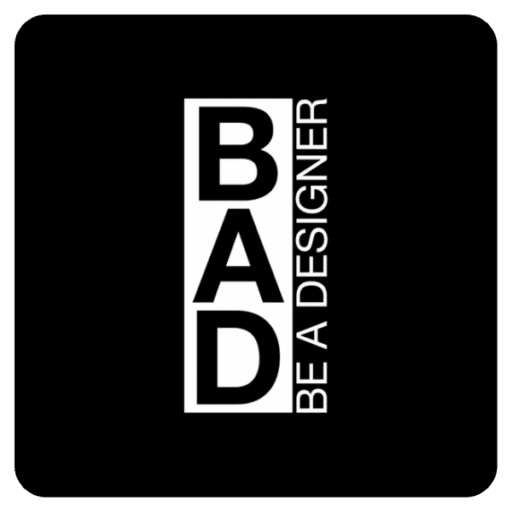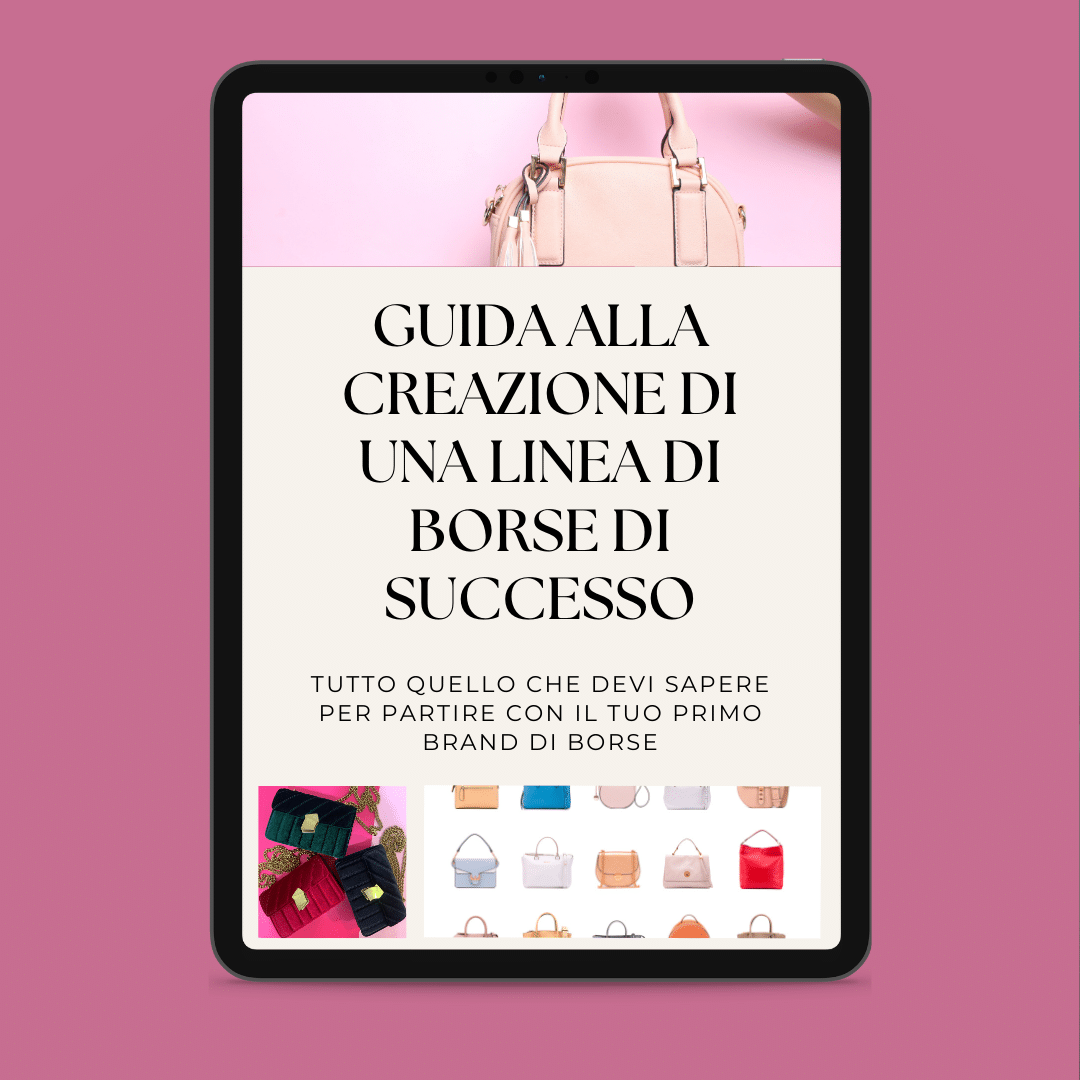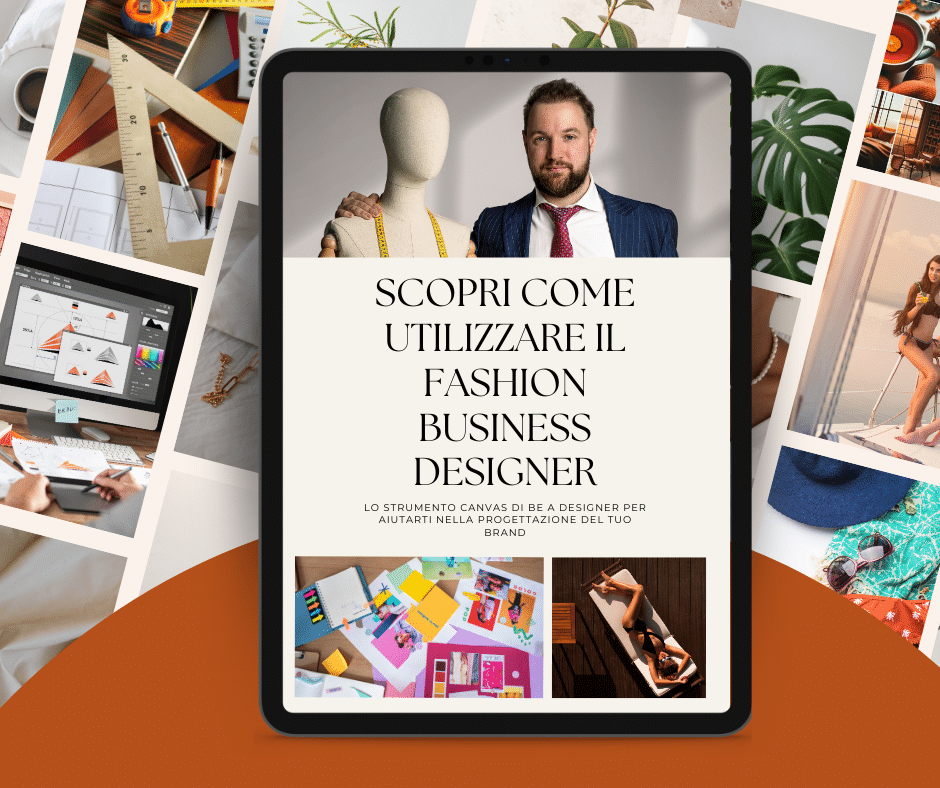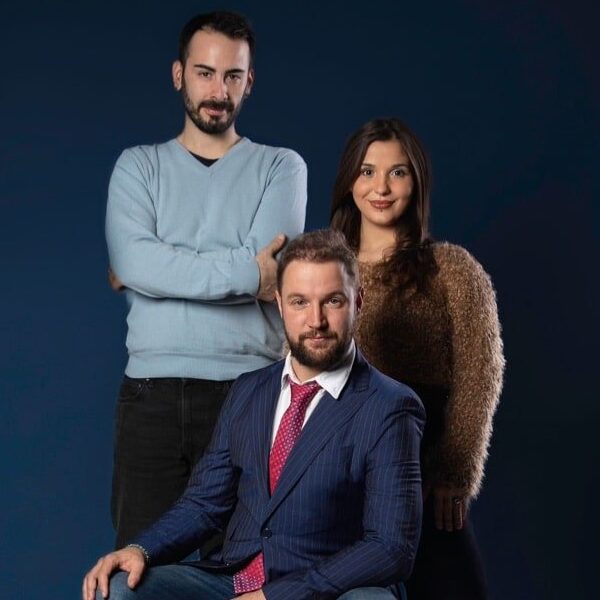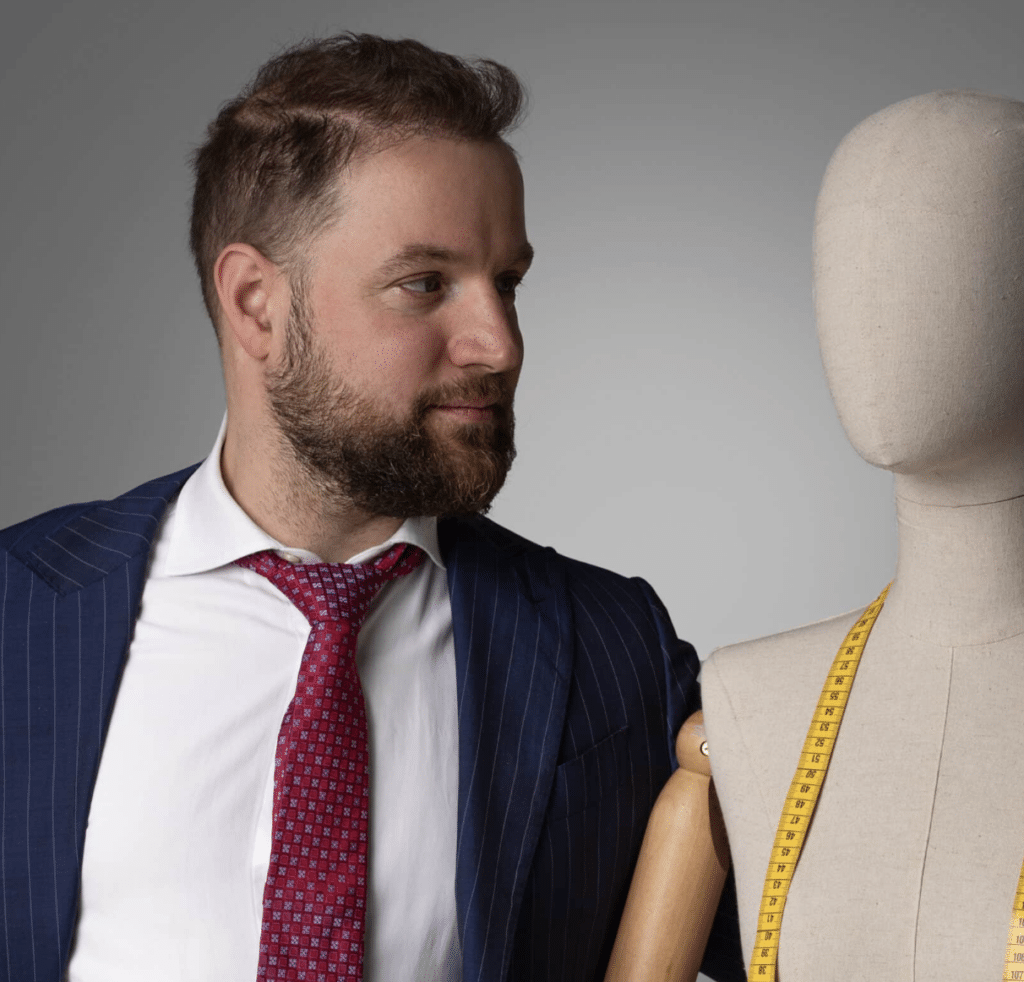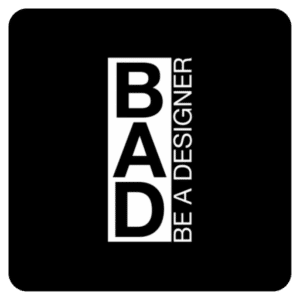INTRODUCTION: Guide to Creating a Successful Bag Line 2024
How can we design and creating a successful bag brand? What are the challenges for those who decide to enter this market segment? What does it mean to produce bags in Italy? Embarking on the journey to create a successful bag line is not just a stylistic challenge, but a bold statement of self-entrepreneurship.
For emerging designers, it is precisely these accessories that offer an incredible opportunity to fuse creativity, functionality and a distinctive brand appeal.
That is why the topic of this article is not simply relevant, but a pillar on which to build your presence in the world of bags and leather goods, especially if you are starting from scratch!
Let me introduce myself Corrado Manentithe creator and visionary behind Be A Designer and I will be your travelling companion in this article that will review some of the fundamental aspects for anyone considering the creation of a handbag brand.
"With years of experience in the fashion industry and an innate talent for elegance and design, Corrado comes across not only as an expert guide, but as the ideal travelling companion for those who wish to see their visions come to life in the shapes and materials of an original and effective line of bags."
The leather goods sector, and handbags in particular, represents a niche market extremely profitable and growing. Starting a successful bag line, however, requires in-depth knowledge of marketing, production and design principles.
In this article, we will explore the key steps to create a line of bags that can stand out in the market of 2024emphasising the importance of elements such as:
- choosing a partner for contract manufacturing
- Assessing where to make production
- Protection against counterfeiting,
- Strategies for effective online positioning.
Are you ready to start? We set off on this new adventure Be A Designer!
THE BE A DESIGNER PORTFOLIO OF OUR LATEST PROJECTS FASHION
SUBSCRIBE TO THE NEWSLETTER AND DOWNLOAD FOR FREE:
Click on the button below
and follow the instructions:
THE BAD METHOD FOR CREATING A COLLECTION:
If this is the first article you read welcome to Be A Designer lat the home of up-and-coming designers and anyone who wants to become an entrepreneur in fashion.
We are a creative team specialising in the creation of new product lines and what will effectively become your fashion brand!
Over the years, we have given our attention to a variety of product types, being aware that each market segment has unique peculiarities that influence the creation of the product, the production chain and the operational dynamics of the business. Therefore, I will try to shed some light on some of the questions you may have:
What is the crucial difference in developing a handbag line rather than a clothing line?
- What are the best strategies to position your creations in the market?
- How should you organise your business to maximise sales and distribution?
- All this without being overwhelmed by costs?
These are just some of the questions I am asked most often and they are important questions because if you are thinking that 2024 is the right year to start a project in fashion you need all the information you can get to get off to a good start!
In this article, we will look together at the peculiarities in the creation and customisation of handbag lines and how we can design an iconic accessories brand that will thrive over time thanks to cult pieces.
We will use (as usual) our Fashion Business Designer? Be A Designer's tool for making the whole creative process 'simple' and 'understandable'.
I will guide you Corrado Manenti founder of Be A Designer! I will guide you through this fascinating type of merchandise.
BEFORE STARTING A BRIEF REMINDER:
To better understand my approach it is useful to print out the canvas! you can find all resources in the FREE RESOURCES section or simply by clicking on the banner below.
DISCOVER HOW TO USE THE FASHION BUSINESS DESIGNER CANVAS
SUBSCRIBE TO THE NEWSLETTER AND DOWNLOAD FOR FREE:
Click on the button below
and follow the instructions:
The Canvas is designed to be accompanied by my handbook: "Do you want to be a designer too? at the end of each chapter you will find exercises to fill in the canvas correctly if you have NOT bought it yet. find it HERE
We therefore start with the BRAND DESIGN which is the area you see highlighted in red in the picture below:
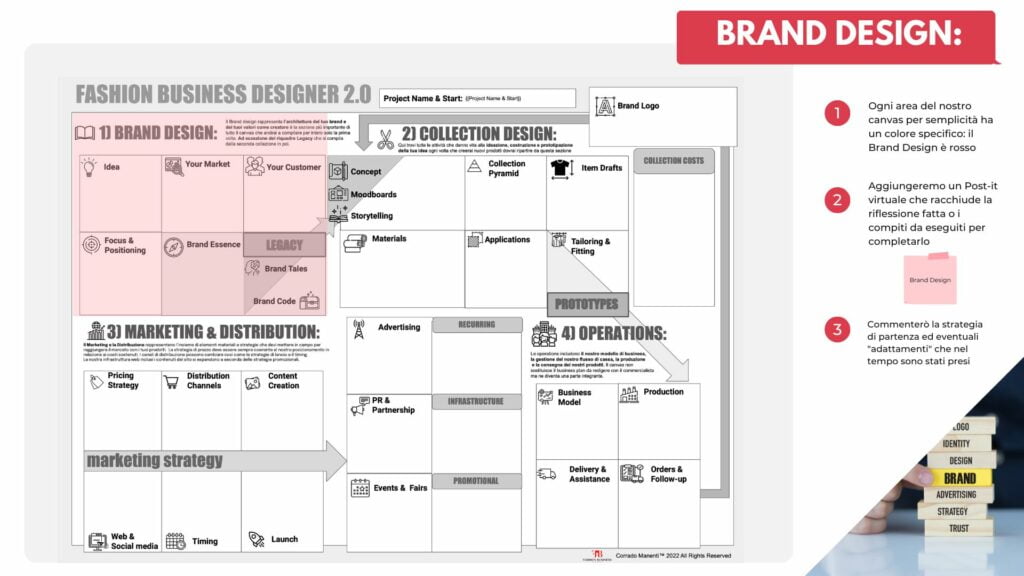
FOLLOWING THE CANVAS, WE WILL ANALYSE SOME POINTS THAT DISTINGUISH THE CREATION OF BAGS AND LEATHER GOODS FROM THE TEXTILE INDUSTRY
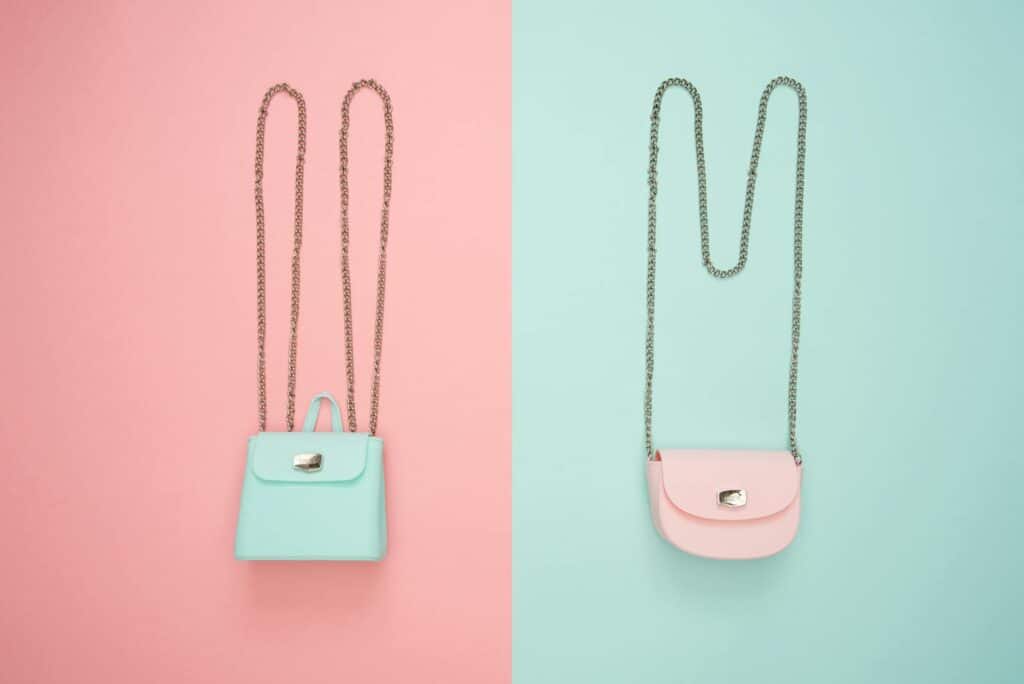
BRAND DESIGN:
How to structure the design of your handbag brand
IDEA: Creating a bag brand means offering not only a durable product but a true symbol of style and functionality.
A quality handbag combines practical utility with aesthetic value, becoming a 'classic' that, like good wine, can acquire value over time. In this context, the second-hand phenomenon plays a significant role, as branded and quality bags maintain or increase their value, attracting both collectors and sustainable fashion lovers.
When creating a handbag brand, it is essential to focus on quality, unique design, and a brand story that speaks to the heart of consumers, offering pieces that are not just accessories but expressions of a distinctive lifestyle.
Like any product, we have two psychological dimensions that underlie the creation of your brand and what your products will be:
excellence in the functional dimension: The swimming costume is analogous to any garment for technical/sports use, the primary function being to go into water whether salt/ fresh water, resist sweat, heat, UV rays, sand abrasion, etc.
the set of perceived intrinsic qualities relevant to the customer.
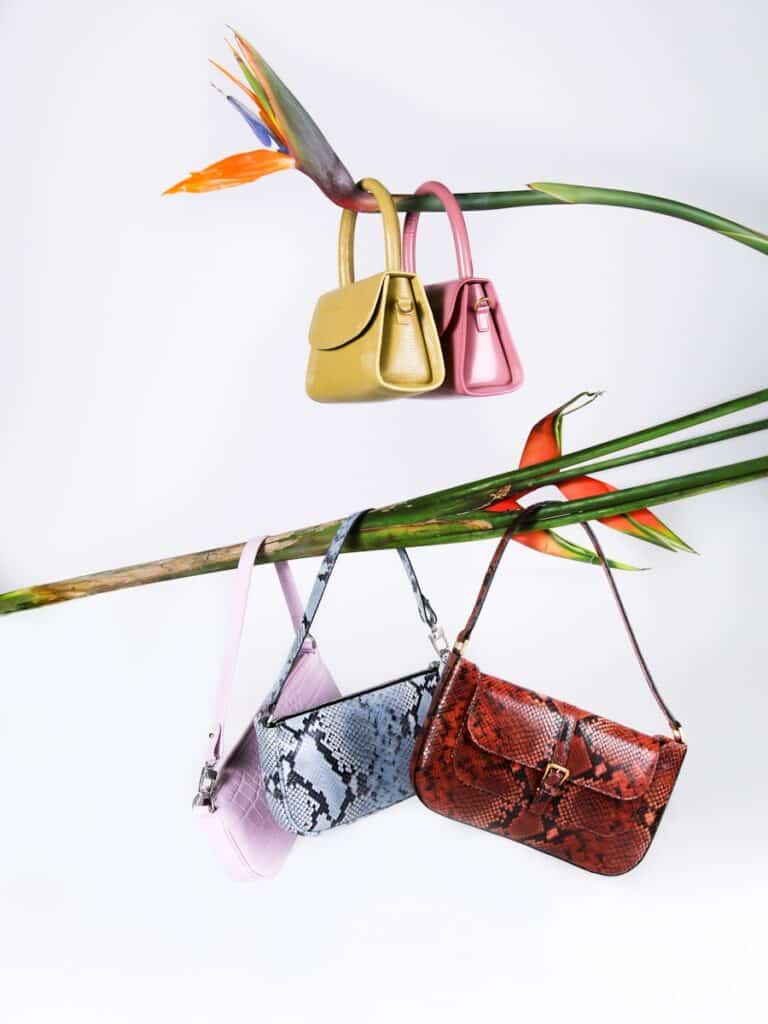
COLLECTION DESIGN:
How do you structure the collection part of your swimwear line?
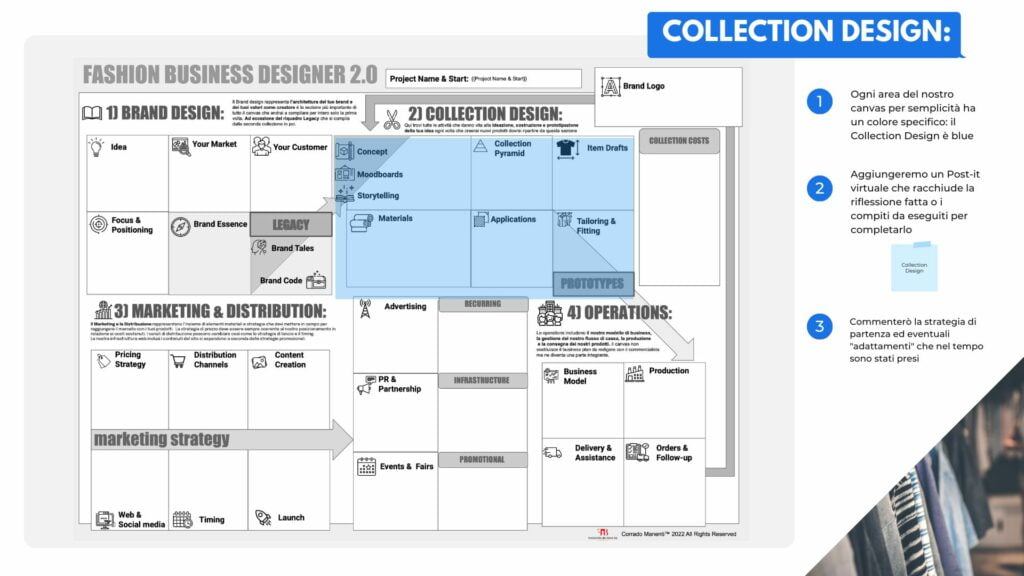
DETAIL OF THE COLLECTION DESIGN DIAL:
The Differences between the Textile Chain and the Handbag Chain
he world of fashion rests on two fundamental pillars: clothing and accessories, with bags representing a crucial segment of the latter. Although at first glance they may seem worlds apart, the production chain of these two areas shares several stages, from conception to realisation, although they differ in their technical and creative specificities.
Product Design and Development The first step is always driven by creativity: fashion and accessory designers explore trends, materials and functionality to create products that are not only beautiful, but also practical. While clothing focuses on silhouettes, draping and fit, bags require special attention to structure, durability and functional details such as closures and compartments.
Selection of Fabrics and Materials Here, the paths begin to diverge. Clothing ranges over a wide range of fabrics, from light for warm weather to heavier and more structured for cold weather. Bags, on the other hand, require materials that guarantee robustness and longevity, such as leather, innovative fabrics and metal hardware components.
Ennobling processes: Finishing processes introduce a further level of customisation and quality. In the clothing sector, printing, dyeing and embroidery add colour and detail. For bags, in addition to printing, techniques such as the application of foils or metallic foils are used, which are essential to create unique textures or striking visual effects.
Production: The production phase sees the assembly of pieces. Here, clothing relies on cutting and sewing, often with production lines that can handle large volumes. Handbags, on the other hand, may require a more artisanal approach, especially for those high-end models, where precision detailing, such as hand-stitching and the insertion of metal components, becomes crucial.
Finishing and Quality Control: The last step before products reach consumers is quality control, which is vital in both sectors. For clothing, the correct execution of seams, hems and finishes is checked. Bags, due to their more structured nature and often higher cost, require scrupulous attention to the strength of handles, closures and the aesthetic perfection of each surface.
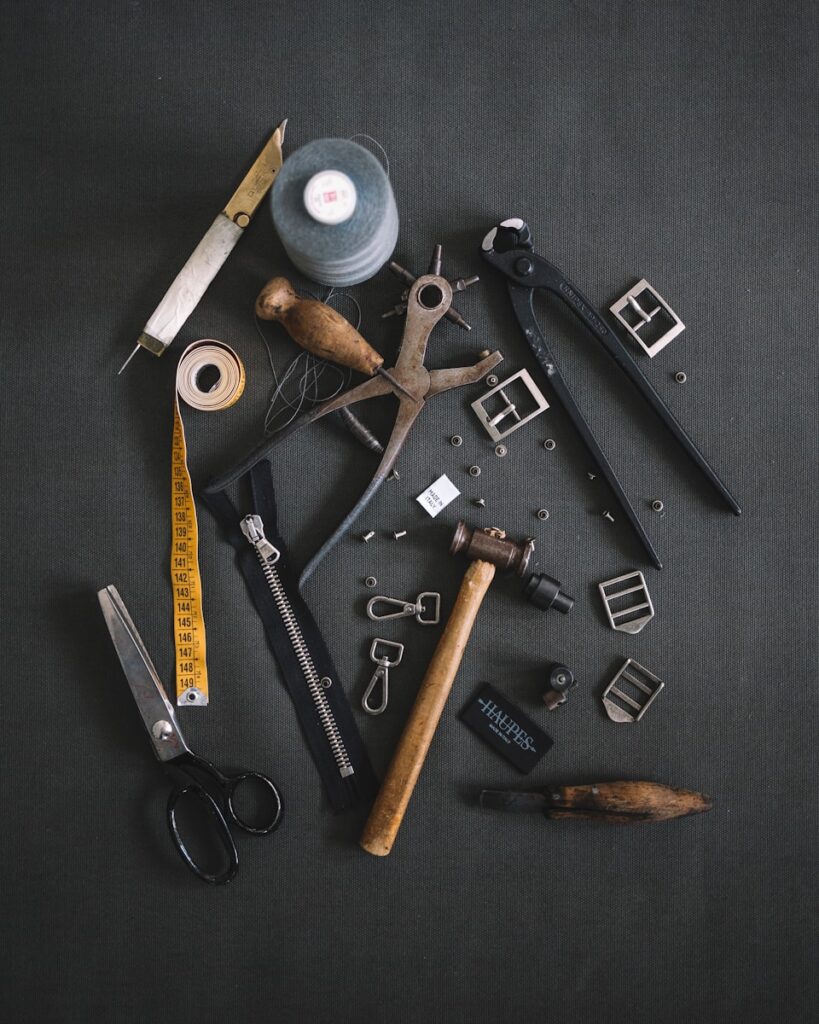
Define the design and collection that represent your brand
Before starting production of your bags, it is essential to clearly define the design and collection you intend to offer. This initial phase includes researching trends, selecting one or more representative designs, and deciding on a range of products that will complement your brand and appeal to your target market.
Having a clear vision of what you want to create will help you effectively communicate your needs to production partners and guide future marketing and product development decisions.
If you follow my approach to be more FOCUSED and impact you could specialise in one type of bag and play with colour variations
This is also a smart strategy not to waste too much money on the creation of prototypes.
Importance of the prototype in bag production
The creation of a prototype is a critical step in the bag production process.
A prototype allows you to assess the feasibility of the design, test materials, and make changes before production launch.
This step is crucial to ensure that the final product meets the quality and style expectations of your brand. Also, having a prototype available is useful when presenting products to potential retailers or consumers for feedback.
This phase can be found in the Marketing & Distribution of the Fashion Business Designer Canvas.
Market testing: gathering feedback before the official launch
Carrying out market tests and collecting feedback before the official launch of your bag collection is a good strategy to measure public interest and reception.
We have to be ready for the actual product launch when we are finishing the prototyping phase. We have various strategies we can deploy to start presenting our product.
Bags like all high-end products that start with a considerable cost per piece must be treated with care!
We cannot usually afford to have too many products in stock at the beginning, let alone give them away to online influencers for promotion without an integrated strategy using both online and offline! We must therefore test our market and discover the quickest way to reach our potential customers.
These tests can be carried out through presentation events, social media campaigns, or by sending product samples to influencers and industry magazines. The feedback gathered will allow you to make any necessary changes to optimise the final product and refine your marketing plan for a handbag company, increasing your chances of success in the market.
SUBSCRIBE TO THE NEWSLETTER AND DOWNLOAD FOR FREE: Click on the button belowTHE BE A DESIGNER PORTFOLIO OF OUR LATEST PROJECTS
FASHION
and follow the instructions:
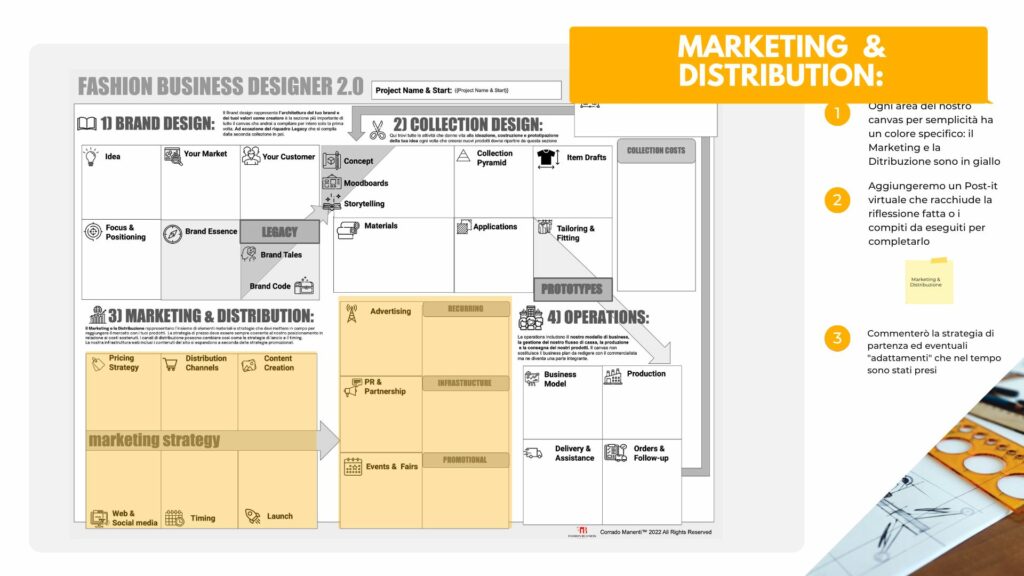
The materials that make up a bag:
MATERIALS: Bags can be made from a wide variety of materials, each chosen for its specific qualities, ranging from aesthetics to functionality. Among the most commonly used materials are:
Leather: Classic and elegant, leathers are chosen for their durability and appearance that improves with time. Each type of leather, from soft calfskin to robust leather, offers unique characteristics in terms of grain, softness and ageing capacity.
Synthetic materials: For those seeking vegan or more affordable alternatives, synthetic materials such as polyurethane offer versatility and durability. They can be processed to imitate the look of leather or come in colourful varieties and innovative patterns.
Fabrics: From cotton to nylon, the fabrics offer lightness and the possibility to explore different textures and prints. They are particularly popular for summer or casual bags.
Recycled and Sustainable Materials: With an increasing focus on sustainability, materials such as recycled plastics, upcycled fabrics, and natural fibres such as hemp are becoming increasingly popular, allowing designers to offer eco-friendly products without compromising style.
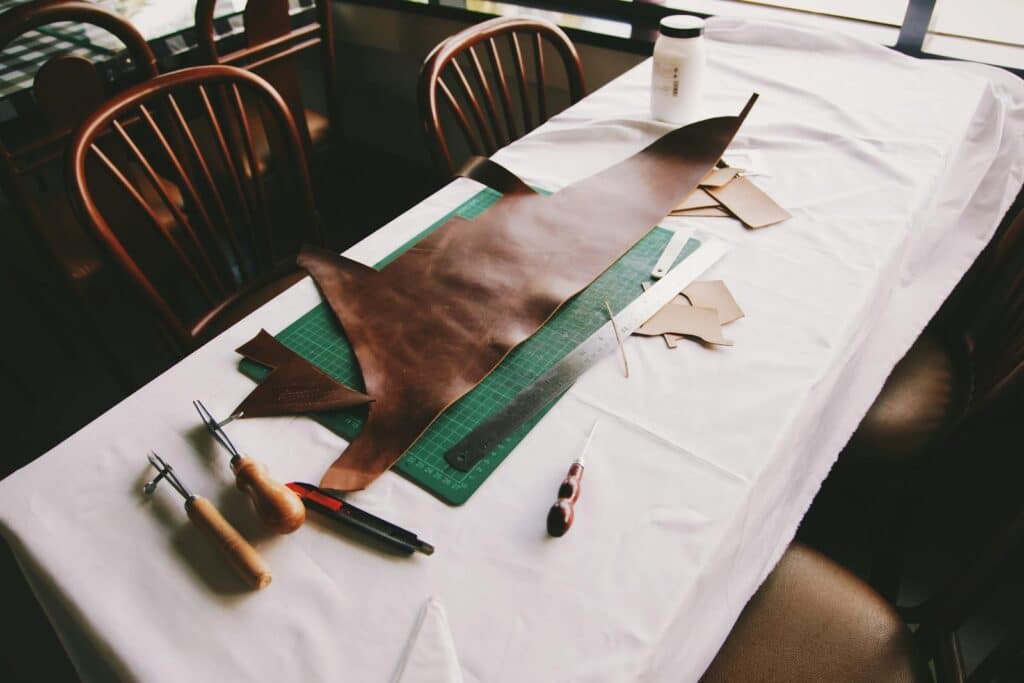
How much does it cost to develop and design a line of bags in Italy?
At this point, if you were thinking of launching your own line of bags, you would certainly be asking yourself: 'How much will it cost me to realise my project? Let's explore the various financial aspects together!
As always, there are standard and variable costs depending on the specificity of your product. If you are interested in finding out how we can help you in more detail with the creation, I suggest you follow the link at the end of the article.
MATERIALS: For bags, the choice of materials is vast: leather, synthetic fabrics, recycled materials, and so on. Quality made-in-Italy leather, for example, can vary greatly in price depending on the type, but starts at around 30? per leather.
The skin is measured and sold according to the size of the whole animal skin, not per square metre!
This is because the dimensions and characteristics vary depending on the animal of origin and the type of treatment undergone, such as vegetable or chemical tanning. This approach to measuring and selling allows the unique characteristics of each hide to be exploited to the full, guaranteeing the authenticity and quality of the finished product.
Recycled or eco-friendly materials can offer excellent value for money and added value in terms of marketing to a sustainability-conscious public, although in recent years especially in luxury (including car interiors) there has been a major about-face and return to animal skin precisely to have better durability over time!
LAVORATIONS AND DETAILS: Customisation through printing, embroidery or the application of unique details such as buckles and fasteners can influence the cost. For example, digital printing on fabric can cost around 10? per running metre, varying according to detail and quantity.
Developing a unique bag model can cost between 350 and 650? This initial investment is crucial to ensure that the design is not only attractive but also practical and replicable in production.
ACCESSORIES/LABELS: A bag requires not only quality external materials but also internal components and accessories that complement its functionality and aesthetics. Accessories such as zips, buckles, and buttons can vary widely in price, as can customised labels that can add a distinctive touch to your brand. For basic accessories and labels, the cost can vary from 5? to 20? depending on quality and supplier.
PACKAGE: The labour to assemble a quality bag in Italy can cost between 30? and 50? per unit, varying according to the complexity of the design and the quantity produced. This is crucial to ensure that the finished product meets the desired quality standards.
To give you a concrete idea, the average production cost for a bag made in Italy, in limited quantities and with good quality materials, could vary between 100? and 150? per piece. This means that competing on price with the fast fashion giants can be difficult, as their production costs are significantly lower (often made in countries with cheap labour).
That is why it is essential to focus on creating a unique product supported by a strong brand that can justify a higher selling price.
A typical price multiplier in the premium fashion sector can vary from X2.5 to X3 with respect to the cost of production.
However, the choice to produce in Italy brings with it added value in terms of quality and sustainability, aspects that are increasingly appreciated by consumers.
Remember, the uniqueness and authenticity of your product is what will set you apart in the marketplace, making your offer irresistible to your target audience. Focus on quality, innovative design and your brand values to build a solid base of loyal customers.
WHAT TO DO FROM HERE ON?
We have seen some of the features that make the creation of a bag line a complex challenge that requires preparation and a good business plan!
Unlike other types of product, we need to have an entrepreneurial outlook and a product that is not only of quality (for a high quality made in Italy bag we take this for granted) but also something unique and special that stands out with its style!
For an emerging brand of handbags made in Italy, the starting market is abroad with a strong focus on North America and Asia this is undoubtedly an opportunity but, on the other hand, we have to deal with an initial cost to be borne by specific marketing actions and by a brand that knows how to convey the appeal of Italian-made products to the world.
We have seen what the main items are that make up the cost of a line of bags produced in Italy, obviously they will not sell themselves! So we will have to wisely calculate MARKETING costs and also LOGISTICS especially if we want to sell online and physically ship our products.
Our BAD approach addresses all these steps and makes everything easy and understandable even for those who are new to this world of creating and selling a fashion line. So if you liked this article and you have not yet read my book, I recommend that you BUY IT NOW.
To conclude, I want to leave you with 6 valuable tips to get off to a good start!
6+1 TIPS FOR A BETTER START in 2024:
1) Developing a Compelling Brand Vision:First of all, it is crucial to define the vision of your brand. The bags you want to create must reflect a story, a philosophy and an appeal that sets them apart in a saturated market. Ask questions such as "What are my brand values?" and "What experience do I want to offer my customers?" This will allow you to create a strong emotional portrait associated with your brand.
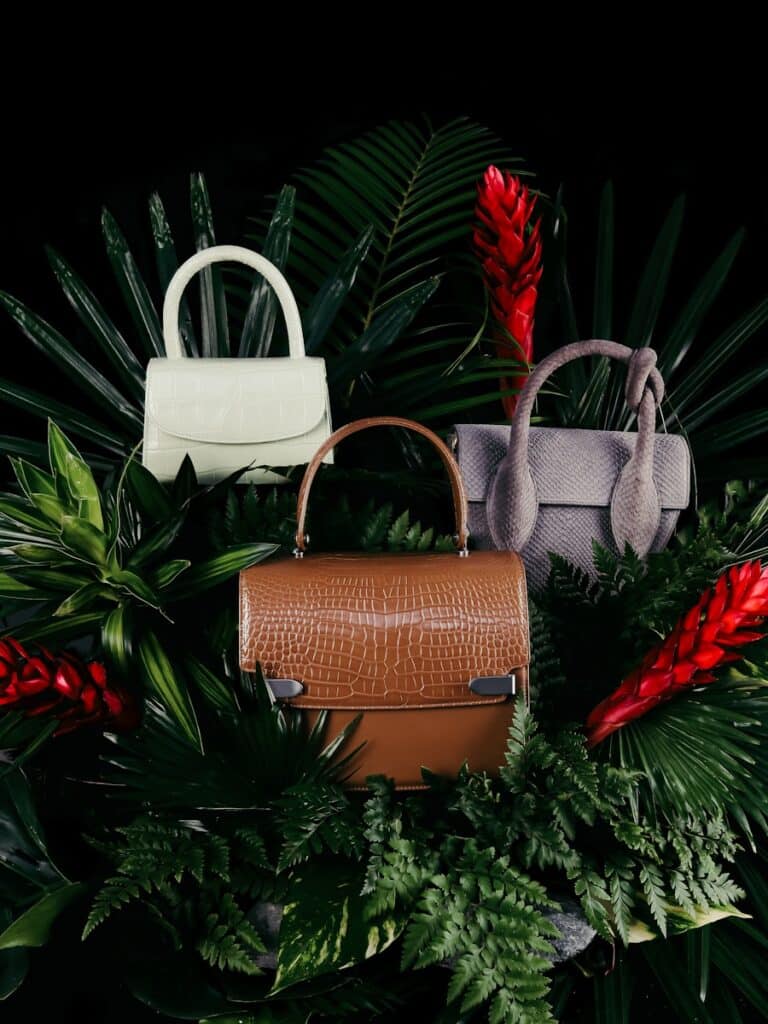
The presentation, the 'display' of your product from the Styling of the photograph will contribute substantially to creating the perception around your brand! Always make sure that this is consistent with your Brand Essence.
2) Analysing the Market: Understanding the market landscape and competitor positioning is vital to your success, which is why when we start a new project we create for our customers a STRATEGIC ANALYSIS detailed before you even start thinking about the product. Conduct market research to discover emerging trends, unmet consumer needs and the strategies of your most direct rivals. Use this information to fill a gap in the market or to offer a unique perspective through your products.
3) Building a Unique Brand Identity: Your brand must stand out. From the logo to the colour palette, every element of the visual identity must be consistent and memorable. Develop a brand voice that is reflected in everything from your website to your marketing materials. The identity must resonate with your target audience and stick in their minds.
4) Integrating Fashion Trends with Your Vision: Stay up-to-date with the latest trends, but only select those that align with your brand vision. Don't follow trends for the sole purpose of being current. Rather, adapt trends so that they make sense for your line and reinforce the story you are telling through your bags.
5) Selecting High Quality Materials and Production Processes: The 'made in Italy' label is synonymous with quality. It chooses fine materials and works with experienced craftsmen to ensure that each bag is a masterpiece of quality and craftsmanship. Consumers recognise quality and are willing to pay more for a product that lasts.
6) Telling the Brand Story through an Online and Offline Presence: Abstract your brand's universe into an engaging narrative. Develop original content that tells the story of your bag line, the production values, and the philosophy behind it. Go beyond a simple e-commerce site and build an online presence that is interactive and immersive, using social media, blogs, and collaborations. Similarly, offline events and pop-up stores can create a unique brand experience that e-shops cannot replicate.
7) Exploiting Networks and Resources:Do not underestimate the power of networking. Attend fashion events, connect with other designers, and seek out mentors in the industry. Collaborate with influencers and other brands that share similar values to expand your reach. Use technology, such as design software and e-commerce platforms, to optimise the product development and sales process.
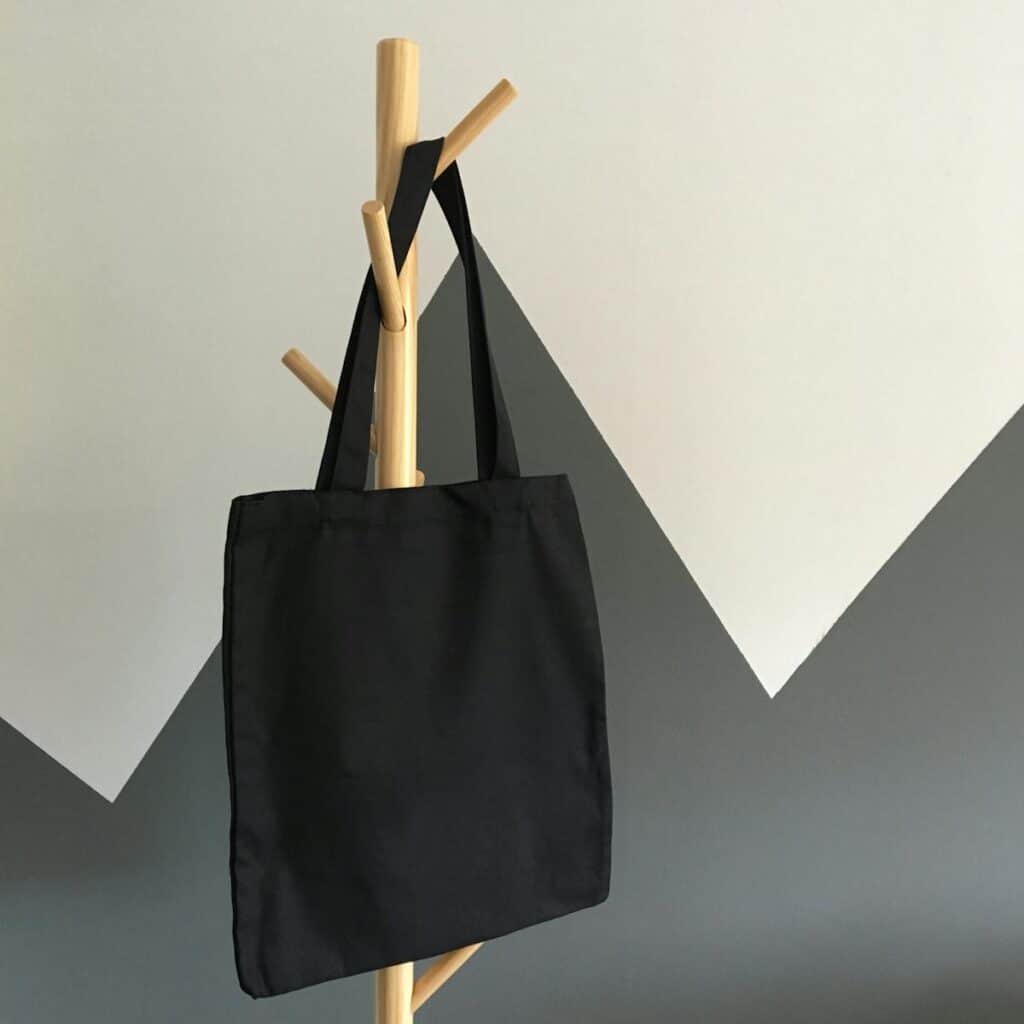
What were the trends of 2023 in the stock market world?
In 2023, the world of handbags saw a variety of trends reflecting both the return of vintage styles and the adoption of modern innovations. Among the most popular trends, the following stood out:
Designer weaves and jewelled details: bags embraced intricate details such as metal coin clasps, inlays and bold colour play, often accompanied by chain handles and minimalist lines. Vintage inspiration, particularly from the 70s and 80s, was revisited with a modern twist.
Colours and fabrics: The trend colours for handbags in 2023 ranged from classic black and white to pastels, from bright fluorescent colours to colonial tones. Leather, especially in brown and black, was the predominant fabric, but there was no shortage of floral prints and pastel-tone colour games.
Iconic bags and style investments: Some bags have retained their status as style icons and long-term investments. Among them, the Louis Vuitton Speedy, the Hermès Birkin, the Gucci Dionysus, the Prada Galleria and the Chanel 2.55 have confirmed their status as desirable pieces due to their ability to fit into any wardrobe and maintain their value over time?
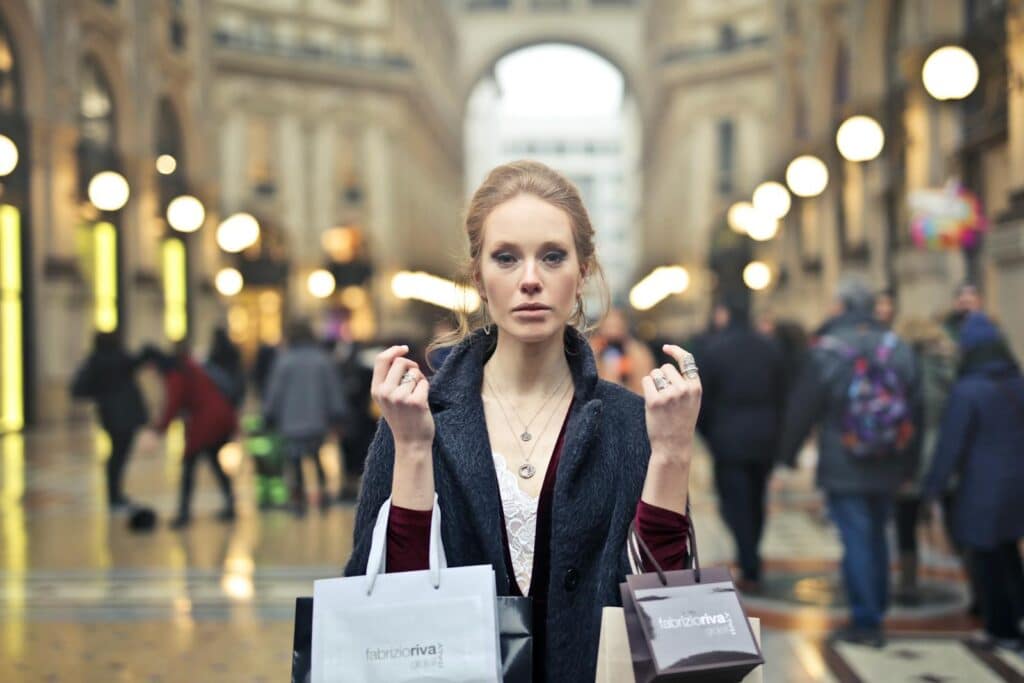
Instead, what will be some trends in the world of handbags for 2024?
Shearling and bowling bags: Materials such as shearling have found their way onto shoulder bags that can be transformed into clutches, while the bowling bag has made a comeback with rigid or semi-rigid structures and short handles. Miu Miu, Chanel, Louis Vuitton, Valextra and Tod's are just some of the brands that have relaunched these styles.
Geometric shapes and coconut effect: Clean lines and geometric shapes dominated the bag proposals, highlighting models with geometric prints and decorations. At the same time, bags with a crocodile effect, imitating crocodile skin, marked a return to retro style, evoking the fashion of the 1950s.
These trends reflect a combination of a return to the past and innovationwith a focus on quality materials and distinctive details that can transform a bag from a simple accessory into the star of your outfit.
If you want to discover more trends for 2024 in fashion and clothing I wrote an article HERE!
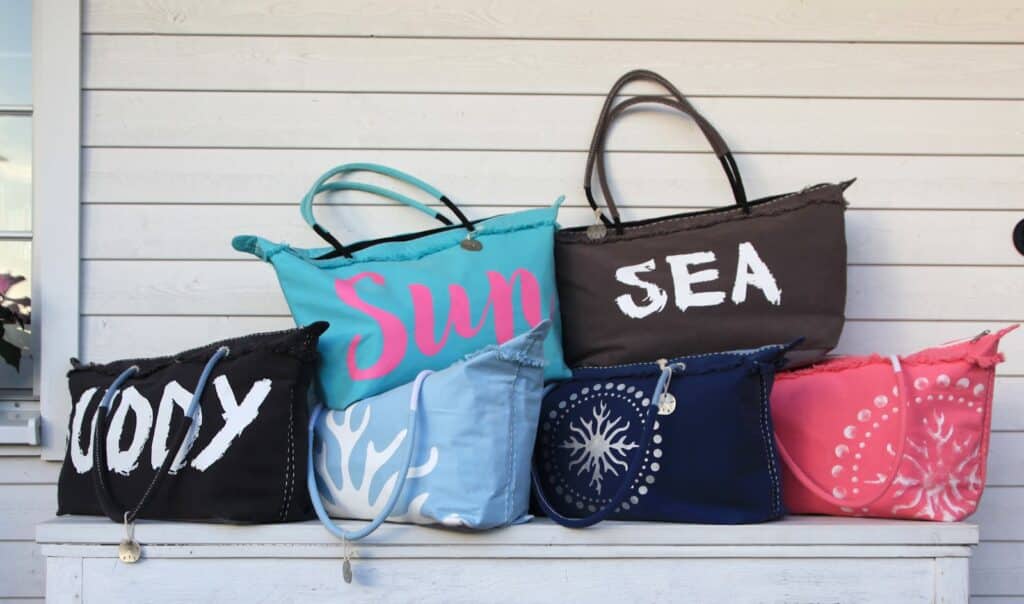
IF YOU LIKED THIS ARTICLE WRITE ME A COMMENT BELOW AND SHARE IT, IT WILL BE A PLEASURE TO ANSWER YOU ?
Would you like to join me and other visionary students on an innovative journey where we will set out to conquer the fashion world? Trust us, together nothing will stop us even Borat-style costumes!
WARNING!
If you have read this article it is because you are certainly a fashion enthusiast, but the real reason why you read these topics on my site and not in a fashion magazine
is because you have most likely had in your drawer for some time
the idea of creating your own fashion brand.
I am Corrado Manenti and now for more than 10 years I founded the first independent style office specialising in supporting emerging designers in the development of their collections and their path to self-entrepreneurship.
If you are a designer or simply a creative person and have always dreamed of building your own fashion collection and selling it, you are in the right place!
Will 2024 be the right year to bring your project to life?
Schedule a free consultation with me and let's evaluate the future of your project together.
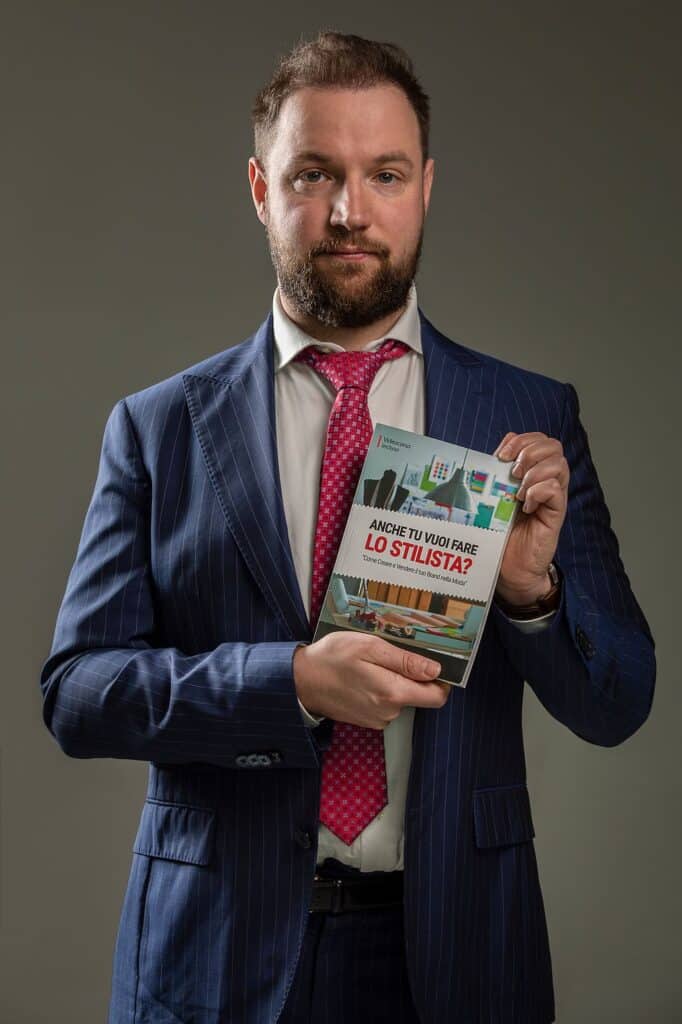
At Corrado's is everything!
Until the next article!
